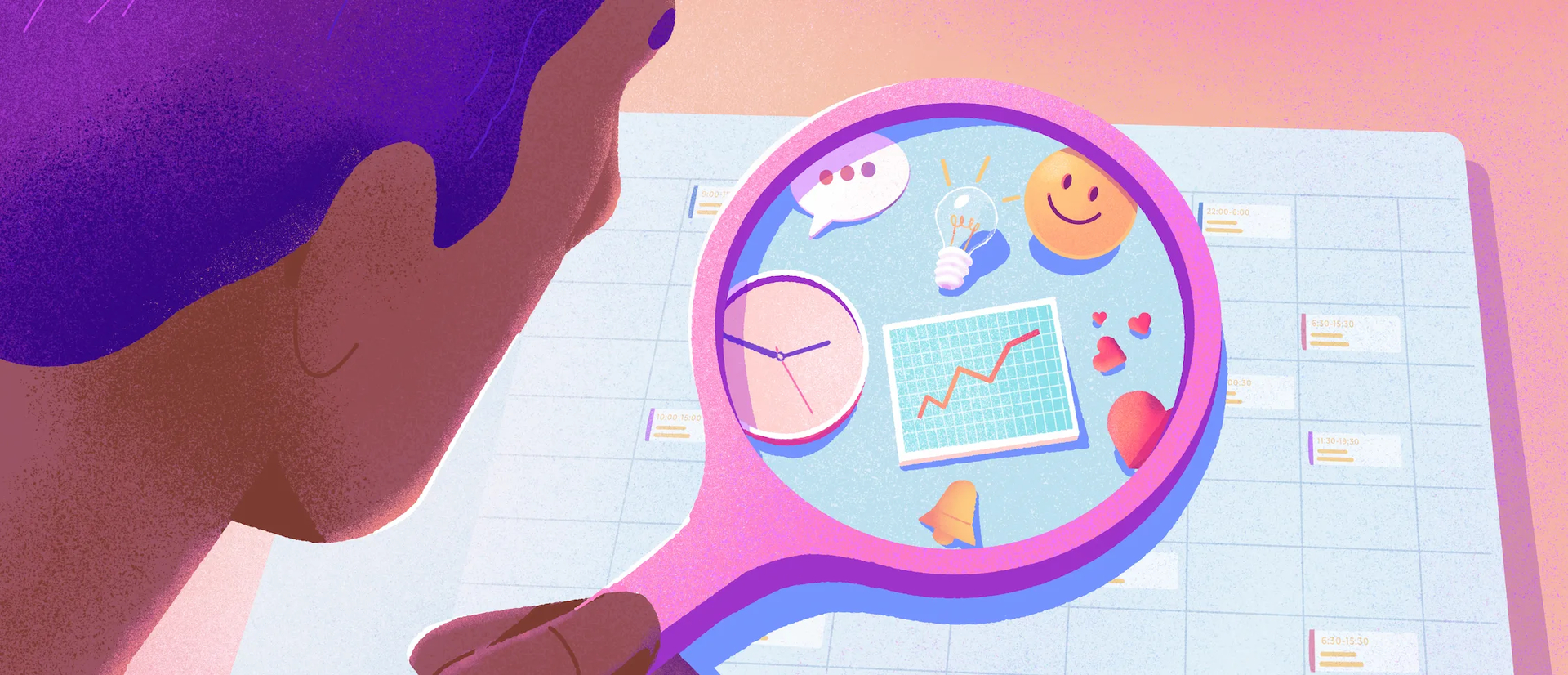Work schedules are one of the most important tasks for any manager overseeing employees with flexible working hours.
Given ever-changing employee availability, last-minute absences, and fluctuating customer traffic, creating schedules can quickly become complex and time-consuming.
However, work schedules are an essential personnel management tool to maintain day-to-day company operations and ensure compliance with existing labor standards.
In this article, you will:
- Discover best practices for managing your employees’ schedules
- See our top tips for optimizing work hours
- Learn to differentiate various types of shifts
- Learn about various laws governing work schedules
Best Practices for Managing Work Schedules
When you’re responsible for scheduling your team, only one thing is certain: the unexpected will always arise.
Illness, accidents, obstacles, misunderstandings—the reasons can be many. The important thing is to remain flexible and have easy solutions at hand.
Understanding Your Needs and Those of Your Employees
When creating your team’s schedules, make sure you have a good understanding of your organization’s needs, so that you can schedule enough employees. This will ensure that your employees are able to provide quality service to your customers without becoming exhausted.
Avoid scheduling employees who are not available, and always try to respect their limits and preferences. If employees feel that you respect their constraints, they will have a better bond of trust with the company and be much more inclined to give their best.
If you respect your own needs and those of your employees, you’ll ensure a good work-life balance for your team members and achieve your company’s objectives.
Setting Clear Limits
Explain the rules and scheduling protocols or processes clearly to your employees. The clearer your expectations, the fewer the problems.
Tell them how to:
- Submit time-off requests;
- Change their availability;
- Share their ideal number of weekly work hours; and
- Know when they are considered to be late, what are the valid reasons for absence.
Show Flexibility
Allow your employees to swap shifts when the unexpected happens. There’s nothing worse than working in a place where the work schedule is set in stone and impossible to change.
Balance schedules so that it’s not always the same employees who have to work the more difficult shifts or at less interesting times.
For example, make sure you give your employees, even students, a full weekend off on a regular basis. This will give them a better work-life balance.
Who knows, maybe this will reduce the number of leave requests, as employees can better plan their activities around their schedule.
5 Tips for Optimizing Working Hours
To keep your operations running smoothly, the management of work hours needs to be carefully orchestrated.
Here are our top tips for creating the best work schedule.
1. Use the Right Tools
Use employee scheduling software or free work schedule templates to simplify all your management tasks.
For example, with Agendrix, you can create schedules based on the availability and preferences submitted by your employees, share their schedules with them in a single click, and make real-time updates directly in a single tool.
This collaborative solution will improve communication within your company, increase employee satisfaction, and reduce the number of scheduling errors.
At the same time, you’ll be able to focus on even more important tasks, since you’ll be saving an enormous amount of time thanks to a high-performance tool.
2. Analyze Your Workforce Needs
The better you understand your needs, the better you’ll be able to plan schedules. If you’re never on the floor and don’t try to understand your employees’ reality, the chances are higher that your schedule won’t be realistic.
Make sure you have enough employees for your team members to be able to take vacations. Consider hiring part-time employees, students, or even seasonal employees, depending on the nature of your business.
To better predict busy times and create schedules accordingly, follow these three steps:
- Calculate your labor costs carefully;
- Get out on the floor to see the extent of the work to be done;
- Ask your employees for their opinion.
3. Give Employees Some Time Off
To be able to give their best, your employees need to be able to rest. So, optimizing schedules also means planning sufficient rest time.
For example, make sure your employees always have two consecutive days off to recharge their batteries. Also, don’t hesitate to schedule breaks and meal times so that your employees actually take the time to enjoy them.
Also, try to offer enough vacation time to your team members. In Canada, you are required by law to offer at least two weeks’ vacation per year, but let’s be honest, that’s not enough. If you can afford it, offer more.
Your employees will be more productive and efficient at work, and this advantageous working environment will help you attract and retain talent.
4. Anticipate Problems
If you already have solutions in place for the most common problems, you’ll save an enormous amount of time as far as scheduling goes.
For example, your employee leaves you a message at 7 a.m. to tell you that he’s got a stomach bug and won’t be able to make his 9 a.m. shift. Don’t panic, just follow the protocol you’ve put in place for unplanned absences.
Create an open shift in your scheduling application and send it to all your available and qualified employees. This way, other employees will be able to volunteer to fill that shift.
However, as a manager, it’s your job to ensure that the company’s operations continue smoothly. So, you may have to report to work to replace your employee yourself if no other member of your team is available.
Keep an eye on your scheduling application, and as soon as you have confirmation that someone can replace the employee, you can get back to your regular duties.
Don’t hesitate to schedule more employees at busy times or to introduce on-call shifts to make up for staff shortages while staying within budget.
5. Get To Grips With Employment Law
The rules governing labor laws can be very complicated. That’s why it’s essential to equip yourself with the tools you need to comply with them.
The majority of time and attendance software packages will allow you to modify their scheduling parameters to comply with existing legislation. For example, you could determine the maximum number of working hours per week, limit overtime, and respect mandatory rest periods.
What Are the Different Types of Shifts?
Depending on the type of business and industry you work for, there are many different types of shifts. For example, a restaurant, a retirement home, or a caterer won’t typically have the same work schedule.
As a manager, here are the types of shifts you should be aware of.
- Day shifts: generally between 8 a.m. and 5 p.m., these shifts are typically 8 hours long, but can be shorter or longer depending on the company’s needs. Employees with more experience within the company typically prefer this type of shift, as it allows them to spend the evening with their family.
- Night shifts: usually between 11 p.m. and 8 a.m. the following day, these shifts are generally the hardest to fill and the most exhausting for employees. Many companies therefore choose to offer premiums to encourage employees to work nights. These shifts are common in industries such as health care, security, and hotel services.
- Evening shifts: generally between 5 p.m. and 11 p.m., these shifts are often worked by part-time employees and students. They are sometimes shorter than day shifts, and make it possible to provide service to customers, even in the evening. The restaurant business is an excellent example of an industry where evening shifts are widespread.
- Rotating shifts: these can be day, evening, or weekend shifts. They require employees to work on an established rotation, so that no one has to cover the same shifts all the time. This enables companies to offer their employees weekends off on a regular basis, for example. A common example of a rotating schedule is working every other weekend.
- On-call shifts: on-call shifts require employees to be available to work if the business requires it (in case of emergency, if customer traffic is higher than expected, if extra work comes in, etc.). They do not, however, guarantee hours for staff. These shifts are widespread in industries such as health care, tourism, event management, etc.
- Weekend shifts: these can be day, evening, or night shifts, and are worked on Saturdays or Sundays. They are often filled by part-time employees or students, but can also be worked by full-time employees according to the schedule set by the manager.
- Split shifts: these require employees to work two shifts in the same day, split by a long or short break. For example, an employee in a restaurant works the lunchtime shift between 11 a.m. and 2 p.m., and the evening shift between 6 p.m. and 10 p.m.
It’s worth noting that some scheduling software also allows you to add specialized shifts, such as training shifts offered by Agendrix, for example. These shifts enable managers to better track their employees’ professional development and attach documents for employees to review during their training.
What Are the Laws Governing Working Hours?
In Canada, laws may vary from province to province. They may also be different if a job falls under the responsibility of the federal government.
So, it’s always best to refer to local laws to ensure that employees’ working hours meet employers’ obligations.
In short, here are a few examples of laws to follow in Quebec:
- Employees may refuse to return to work if they have not been informed of their schedule at least 5 days in advance.
- The normal working week is 40 hours.
- Employers must allow their employees to take a 30-minute unpaid meal break after 5 consecutive hours of work.
- Employees must have at least one period of 32 consecutive hours off each week.
- Public holidays must be paid days off, or the employee must receive compensation if he or she has to work.
In France, employers have a number of obligations towards their employees. These can vary widely, depending on the industry in which the company operates and the agreements in place.
Every employer should therefore refer to their human resources manager to ensure compliance with all applicable laws.
Here are just a few examples of obligations:
- The schedule must be posted at least 7 working days in advance.
- The normal working week is 35 hours.
- Employers must offer a 20-minute meal break after 6 consecutive hours of work.
- Employees must have at least one period of 35 consecutive hours off each week.
- May 1st must be a day off with pay, or paid if worked.
For more information, please consult the following article: Working hours: your obligations as an employer.
What Are the Advantages of Managing Employees' Work Schedules?
The benefits of properly managing employee work schedules include:
- Improved employee satisfaction
- Reduced absenteeism
- Reduced turnover
- Building a strong corporate culture
- Increased employee performance
- Contributing to the company’s success
- Reduced conflict within the company
- Increased employee loyalty
What Are the Consequences of Poorly Managed Working Hours?
The consequences of poorly managed working hours include:
- Increased employee turnover
- Increased absenteeism
- Damaged employer brand
- Damaged reputation
- Increased employee disengagement
- Losing money
- Wasting time
- Poor customer service
How to Create a Balanced Work Schedule?
Steps to creating a balanced work schedule include:
- Identifying the company’s needs
- Identifying employee availability and preferences
- Creating schedules according to employee constraints
- Making sure you’ve allocated enough time for breaks and days off
- Sharing the schedule with employees
- Remaining flexible and modifying the schedule as needed










